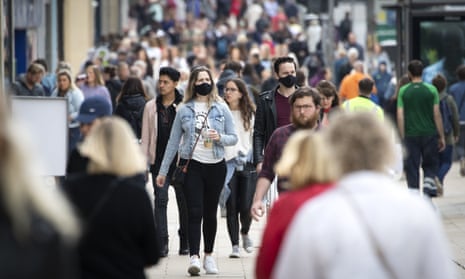Visits to high streets and shopping centres dipped to below pre-pandemic levels last month, with the north of England – plus Scotland and Northern Ireland – trailing behind the south in terms of the overall recovery from Covid-fuelled gloom.
Footfall decreased by 14% in July compared with 2019, reversing gains made in April, as retailers struggled to entice shoppers amid a heatwave in the third week of the month and surging inflation.
Shopping centres were the worst-hit, down 18.6% compared with July 2019, while visits to high streets fell by 17% and retail parks were down 3.5%.
The data from Springboard showed the UK-wide footfall for July had increased by 15.6% compared with last year, 2021. But the rate of recovery indicates an increasing north-south divide.
Between January and July, footfall increased month on month by an average of 1.8% in London compared with just 0.4% in the north and Yorkshire.
The figures indicate that rising inflation and the cost of living crisis is being more acutely felt outside the capital, with July footfall up by 27.4% on 2021 in London compared with 8.9% in the north and Yorkshire, 7.3% in Northern Ireland and 9.2% in Scotland.
Diane Wehrle of Springboard said: “The north-south divide in footfall recovery is not a recent trend and stretches back to July 2021. However, the extent of the divide has increased significantly over recent months.”
Despite retail prices rising, with some retailers charging up to 50% more in the UK than in their EU stores, a footfall increase of 1% over the seven months to the end of July, compared with a decrease of 0.5% over the pre-Covid decade, shows there is still a demand for in-store shopping.
Wehrle said: “We would normally expect footfall to peak in August and then dip in September as the school summer break ends.
“However, in light of the increasing strain on household budgets as a consequence of inflation, this year we are anticipating that in August footfall will plateau or even drop away marginally by around 1% from July, followed by a decline of around 3% over the month between August and September.”
